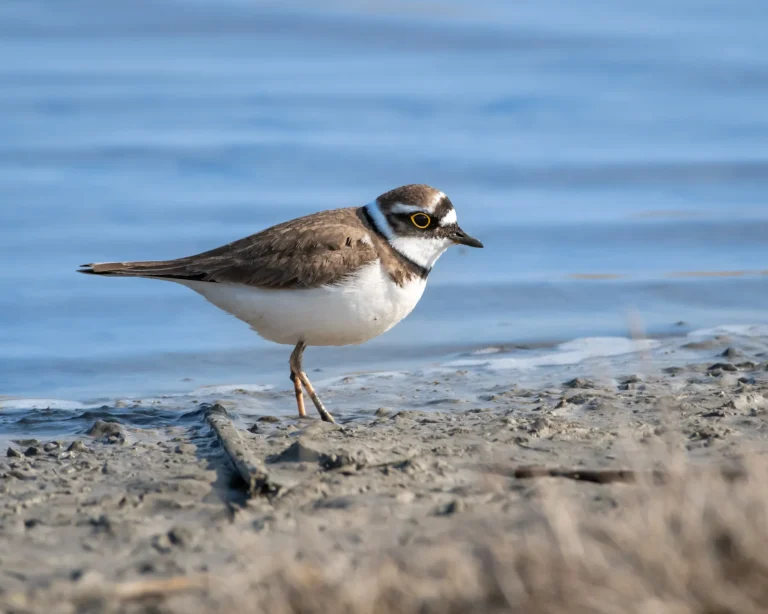
Little ringed plover

Description and how to observe Little ringed plover:
The Little ringed plover is a small bird, about 15-18 cm long, with a distinctive colouring that allows it to camouflage effectively in its natural environment. Adult birds have a black collar around the neck, a white forehead and a black band over the eyes. Their plumage is usually light brown on the back and white under the belly. The Common Sandpiper is best seen in open habitats with sandy or stony soils, often near fresh or brackish water in the Danube Delta.
What it feeds on Little ringed plover:
The Little ringed plover feeds mainly on small invertebrates found in mud or sand, including insects, worms and small crustaceans. This diverse diet allows it to thrive in the varied habitats of the Danube Delta.
Threats:
The main threats to the Little ringed plover include habitat destruction from human causes such as urban development and pollution. Climate change and fluctuating water levels are also significant risks that can affect nesting areas.
Ecological role:
More information about Charadrius dubius:
The Little ringed plover is protected by international and local conventions, and sightings of this species can bring economic benefits through ecotourism. Educating the public about the importance of its conservation can help protect critical habitats in the Danube Delta. In the observations of ornithologists, it is an easily identifiable species, and the sounds it makes in flight are characteristic and can help in its localisation.
Discover now the most beautiful places in the Danube Delta!
In the following pages, you will find detailed information about:
- Top tourist destinations: Traditional villages, nature reserves, tourist trails and much more.
- Activities and attractions: Everything you need to know about boating, fishing, bird watching, cycling and other activities.
- Accommodation and catering: Accommodation to suit all budgets and restaurants serving traditional cuisine.




